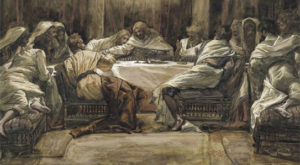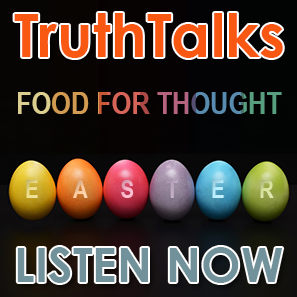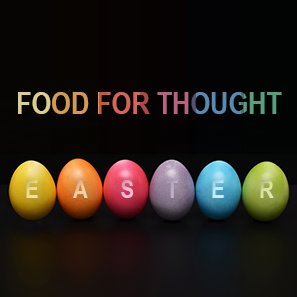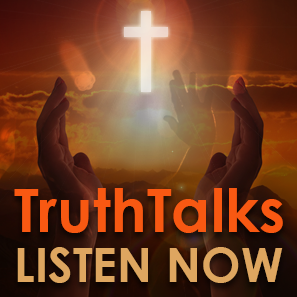Three of the articles I wrote for Joy! Magazine between 2008 and 2014 are worth repeating as a build up to the Passover season of 2019.
The first article concerns Passover, or what many now call Good Friday, and links it to the Lords Table we regularly celebrate in church. The second covers territory not often traversed because the Bible does not directly address what happened between Crucifixion Friday and Resurrection Sunday. And the third article focuses on an Easter phenomenon often debated in the media this time each year; the Shroud of Turin.
I have written dozens of other articles relating to this time of year, but I have selected these three because they are not the usual ‘bread’ served up at Easter, and could therefore provide new ‘food for thought’. I do hope they nourish your spirit as we approach the most sacred time on the Christian calendar.
Passover, Good Friday, and Communion
 The death of their firstborn was the final judgement that persuaded Pharaoh to let the Israelites leave Egypt. God instructed the Israelites to paint the blood of a lamb on their doorposts. He said that when He saw the blood, He would pass over that household and not strike their first-born.
The death of their firstborn was the final judgement that persuaded Pharaoh to let the Israelites leave Egypt. God instructed the Israelites to paint the blood of a lamb on their doorposts. He said that when He saw the blood, He would pass over that household and not strike their first-born.
Passover gets its name from this ‘passing over’ the homes of the people of God.
It is a graphic foreshadowing of how Jesus, the Lamb of God, would shed His blood for the salvation of all who believe.
Every year thereafter, through to the time of Jesus, the people of God celebrated Passover with a special meal. On the Thursday evening that started what we now call Good Friday (the Jewish day starts at six pm the previous evening), Jesus met with His disciples to celebrate Passover with them.
From the details given in the Gospels, it seems they reclined at a low table arranged in a typical Roman format; a sort of square U shape with two short sides and a longer middle section. According to the custom of the day, the one responsible for the meal would sit at the extreme end of one of the short lengths, next to him would be the host, and next to him the guest of honour. The other guests would then sit in order of importance, with the least important sitting at the end of the other short length, directly opposite the organizer. For the Last Supper, the organiser would have been John, the host Jesus, and the guest of honour Judas. Yes Judas! It was protocol for the host to have the guest of honour seated on his left, and to demonstrate favour by serving him with a piece of bread dipped in the stew. Jesus announced to his startled disciples that one of them was about to betray him. John 13:21-26 records how Peter signalled to John to catch his attention and then asked him to inquire of Jesus who His betrayer was. John leaned back against Jesus and asked him. Jesus replied, “It is the one to whom I will give this piece of bread when I have dipped it in the dish.” Then, dipping the piece of bread , he gave it to Judas Iscariot, son of Simon.’
What incredible grace! Jesus knew that Judas was going to betray him yet he chose to make him the guest of honour.
He placed Judas, the least of all, in the highest position, and poor Peter, the leader elect, in the lowest position at the very end of the table. What a lesson for us. Before starting the meal, Jesus had washed his disciples’ feet. He had made it clear that He was setting them an example of servant leadership (John 13:15). Peter must have been very ashamed because he was sitting in the least important seat, and custom demanded that the least at the table serve the others. Jesus had nominated Peter as His successor yet He afforded Peter the least privilege and expected of him the greatest service.
Jesus went from the Upper Room to the Cross. In the Upper Room He washed His disciples’ feet with water, but at Golgotha He washed their souls with His blood. And not just them but all of us who accept His sacrifice.
In the Upper Room, Jesus gave up His dignity to serve, and at Golgotha He gave up His life to save.
When we take communion, we should remember its origins and ponder the depth of the message it conveys. Communion is a stylised recreation of the Last Supper, which was itself a commemoration of the Passover. The wine of Communion reminds us that Jesus gave his lifeblood for us, and the bread reminds us that we are part of the body that He birthed through His death. In Communion, we honour Jesus and serve each other.
We, who are by nature rebels and betrayers, are given the highest honour, yet we are called to take the place of least honour and to serve each other.
Between Crucifixion Friday and Resurrection Sunday
 I wrote this article on the day after Resurrection Sunday. I don’t usually like to call it Easter Sunday – why should we give the pagan goddess Ishtar any credit. Friday embodies the glorious truth that Jesus settled the penalty clause of the violated covenant between God and humanity. I guess that is why some call it ‘good’ Friday. Sunday represents the equally awesome truth that through Jesus we can be born-again of the Spirit. On the cross of Calvary Jesus Christ brought to an end the line of Adam’s sin. As He walked out of the tomb, He started a new spiritual lineage for all who will believe. ‘So it is written: “The first man Adam became a living being”; the last Adam, a life-giving spirit.’ (1 Corinthians 15:45)
I wrote this article on the day after Resurrection Sunday. I don’t usually like to call it Easter Sunday – why should we give the pagan goddess Ishtar any credit. Friday embodies the glorious truth that Jesus settled the penalty clause of the violated covenant between God and humanity. I guess that is why some call it ‘good’ Friday. Sunday represents the equally awesome truth that through Jesus we can be born-again of the Spirit. On the cross of Calvary Jesus Christ brought to an end the line of Adam’s sin. As He walked out of the tomb, He started a new spiritual lineage for all who will believe. ‘So it is written: “The first man Adam became a living being”; the last Adam, a life-giving spirit.’ (1 Corinthians 15:45)
The message of Friday is clear. The truth that Sunday conveys is equally obvious. What, though, is the significance of Saturday?
According to The Apostles Creed, as we now have it, after dying on the cross Jesus ‘descended into hell’. However, the earliest versions of that creed do not contain this clause. When Rufinus introduced it in 390AD it seems that he understood the word ‘hell’ simply to mean ‘grave’. Notwithstanding this, some theologians have developed a complex doctrine of Christ’s decent into the devil’s abode. The primary texts they use are Acts 2:27, Romans 10:6-7, Ephesians 4:8-9, 1 Peter 3:18-20, and 1 Peter 4:6. Wayne Grudem has an excellent section on this topic in his ‘Systematic Theology’ (pages 586 – 594). His concluding sentence reads, ‘concerning the doctrinal question of whether Christ did descend into hell after he died, the answer from several passages of Scripture seems clearly to be no.’
From the descent into Hell doctrine has come the teaching that Jesus had to die both physically on the cross and spiritually in Hell. Saturday, for those who believe this, stands for Jesus’ torment in Hades and his eventual victory, as He was ‘born again’ from the devil’s dungeon. There are plenty of problems with this view. Was Jesus then less than ’God’ that He could be tortured by the devil? Was His death on the cross less than adequate for our salvation? (See 1 Corinthians 1:17)
Colossians 2:13(b) -15 contains a more satisfactory explanation of what Passover Saturday represents. ‘He forgave us all our sins, having cancelled the written code, with its regulations, that was against us and that stood opposed to us; he took it away, nailing it to the cross. And having disarmed the powers and authorities, he made a public spectacle of them, triumphing over them by the cross.’ The language used in this passage evokes the scene of a military court-martial. They bring the offending officer to stand before his troops. The supreme commander then strips him of the symbols of his authority and expels him. Jesus settled the death penalty of the ancient covenant and proceeded to the heavenly throne room of God the Father. There Satan stood in shame before all the angels of heaven. Jesus stripped him of his authority and expelled him from heaven. The accuser of the brethren no longer has access to the presence of God. Hallelujah! This is what the Saturday between Crucifixion Friday and Resurrection Sunday stands for.
So, instead of descending into Hell, Jesus ascended into Heaven! Instead of the devil tormenting Him, He expelled the devil! How could some get it so wrong? Part of the answer lies in how we interpret the Bible. I deal with this in the second half of my latest book ‘Truth is the Word – restoring a lost focus’.
The Sign of Jonah – or a Whale of a Tale
 “A wicked and adulterous generation asks for a miraculous sign! But none will be given it except the sign of the prophet Jonah. For as Jonah was three days and three nights in the belly of a huge fish, so the Son of Man will be three days and three nights in the heart of the earth.”’
“A wicked and adulterous generation asks for a miraculous sign! But none will be given it except the sign of the prophet Jonah. For as Jonah was three days and three nights in the belly of a huge fish, so the Son of Man will be three days and three nights in the heart of the earth.”’
Over the years, I have been keeping reasonably up to date on the findings and theories concerning the shroud of Turin. Every year something new emerges as various scientists seek to understand this enigmatic burial shroud.
The shroud put in its first recorded appearance in 1356 at a time when religious relics and superstitions were rife in medieval Europe. Some researchers claim to be able to trace it back to the sixth century and one even claims that there is reasonable evidence for it coming out of the first century. Whatever its recorded history, many religious people think it is the authentic burial cloth of the Lord Jesus Christ. Recently the Pope went to pray before the shroud, so clearly he believes it has significance.
No matter what one thinks of the shroud, it certainly is a mystery. In 1898 it was photographed for the first time and this led to an intriguing discovery: the image in the shroud is a ‘photographic’ negative. Up to that time, most sceptics had thought that the image was simply the work of a skilled medieval artist trying to cash in on the relics market. However, the discovery that the image was actually a negative put this idea under a lot of pressure. More recently, artists and scientists have attempted to reproduce such an image using pigments, dyes, rubs, heat treatments, and so on. Their results are interesting, but far from compelling. Besides, current microscopic examination of the fabric shows no evidence at all of any pigments.
In 1988, carbon 14 dating seemed to indicate that the shroud originated in the middle ages. More recently, however, facts have immerged which prove that the dating process was seriously flawed and that the cloth could well date back to the first century.
Since 2003, a number of articles have appeared in reputable scientific journals seeking to make sense of the shroud and its image. A popular hypothesis is that the image was formed by ammonia derivatives from a human body interacting with carbohydrate residue in the fabric (the Maillard reaction). But, this doesn’t fully explain the remarkable image. It seems that the image in the shroud is a sort of 3D terrain map of the body it covered. Because of this quality, researchers have been able to use modern computer techniques to develop a full reproduction of the body. In 2010, the History channel aired a documentary showing the results of this process. The resultant 3D image shows a man with abrasions in his face, shoulder, and knees. The scourge marks of a cat-o-nine tails are visible and the wound in the side, wrists and feet are unmistakable.
The consensus opinion at this time is that the shroud of Turin is genuine in that it carries within its fibres the image of a man who died by crucifixion and that in all probability the material can be dated back far earlier than the medieval era. Is it the burial shroud of Jesus? No one can be sure of this, but it is true that the wounds shown in the image conform to the Gospel record of the crucifixion.
Some scientists are still not satisfied with the chemical interaction theory of how the image was formed. They claim that a catalytic event must have caused such a reaction. They theorise that some form of energy must have passed through the fabric to trigger a chemical reaction. One hypothesis is that the units of matter called nuceons must have decoupled causing a dematerialisation of the body. Simply put, the body passed through the fabric of the shroud.
All this is interesting but far from conclusive, so why am I interested in it, and why should you be? Luke 11 and Matthew 16 record Jesus’ words concerning the only sign He was prepared to give an unbelieving generation. Matthew 12:38-41 records, ‘Then some of the Pharisees and teachers of the law said to him, “Teacher, we want to see a miraculous sign from you.” He answered, “A wicked and adulterous generation asks for a miraculous sign! But none will be given it except the sign of the prophet Jonah. For as Jonah was three days and three nights in the belly of a huge fish, so the Son of Man will be three days and three nights in the heart of the earth.”’ Whether or not scientific evidence of the resurrection of Jesus Christ from the dead is the sign for our age is debateable. What is certain however is that research continues, TV channels continue to produce documentaries, people write books, but the mystery remains. The crucifixion and resurrection remain in the public’s eye.
Every Easter, the Christian church remembers the death and resurrection of the Lord Jesus Christ. I am grateful that scientists and sceptics, although they may not believe, continue to wrestle with the possibility that this pivotal event in biblical history may well be historically and scientifically verified. If it was verifiable, would this effect my faith in any way? No, but it sure would make an unbelieving world sit up and take notice.
For anyone interested in learning more about the shroud, HERE is the January 2019 updates to the major site on the subject.
Some mages courtesy of Brooklyn Museum / FreeBibleimages.org and wikipedia/commons





 The death of their firstborn was the final judgement that persuaded Pharaoh to let the Israelites leave Egypt. God instructed the Israelites to paint the blood of a lamb on their doorposts. He said that when He saw the blood, He would pass over that household and not strike their first-born.
The death of their firstborn was the final judgement that persuaded Pharaoh to let the Israelites leave Egypt. God instructed the Israelites to paint the blood of a lamb on their doorposts. He said that when He saw the blood, He would pass over that household and not strike their first-born. I wrote this article on the day after Resurrection Sunday. I don’t usually like to call it Easter Sunday – why should we give the pagan goddess Ishtar any credit. Friday embodies the glorious truth that Jesus settled the penalty clause of the violated covenant between God and humanity. I guess that is why some call it ‘good’ Friday. Sunday represents the equally awesome truth that through Jesus we can be born-again of the Spirit. On the cross of Calvary Jesus Christ brought to an end the line of Adam’s sin. As He walked out of the tomb, He started a new spiritual lineage for all who will believe. ‘So it is written: “The first man Adam became a living being”; the last Adam, a life-giving spirit.’ (1 Corinthians 15:45)
I wrote this article on the day after Resurrection Sunday. I don’t usually like to call it Easter Sunday – why should we give the pagan goddess Ishtar any credit. Friday embodies the glorious truth that Jesus settled the penalty clause of the violated covenant between God and humanity. I guess that is why some call it ‘good’ Friday. Sunday represents the equally awesome truth that through Jesus we can be born-again of the Spirit. On the cross of Calvary Jesus Christ brought to an end the line of Adam’s sin. As He walked out of the tomb, He started a new spiritual lineage for all who will believe. ‘So it is written: “The first man Adam became a living being”; the last Adam, a life-giving spirit.’ (1 Corinthians 15:45) “A wicked and adulterous generation asks for a miraculous sign! But none will be given it except the sign of the prophet Jonah. For as Jonah was three days and three nights in the belly of a huge fish, so the Son of Man will be three days and three nights in the heart of the earth.”’
“A wicked and adulterous generation asks for a miraculous sign! But none will be given it except the sign of the prophet Jonah. For as Jonah was three days and three nights in the belly of a huge fish, so the Son of Man will be three days and three nights in the heart of the earth.”’ 

